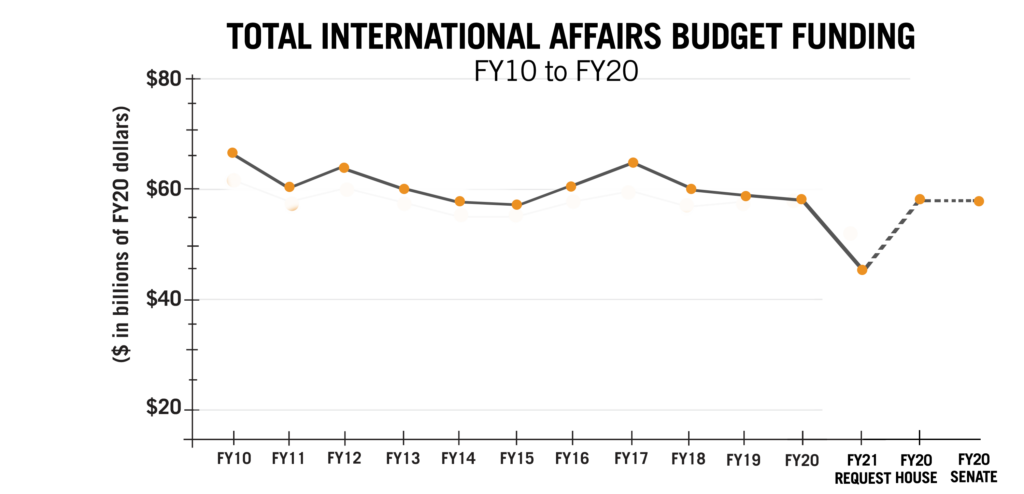

November 17, 2020
In February 2020, the USGLC released an analysis of the Administration’s FY21 budget request. For the fourth year in a row, it called for deep cuts to America’s development and diplomacy programs despite growing global crises. Both the House and the Senate rejected the Administration’s dangerous and disproportionate cuts to America’s development and diplomacy programs in their respective FY21 appropriations bills. Congress has demonstrated once again strong bipartisan support for these programs on Capitol Hill.
The Administration has consistently proposed deep cuts to the International Affairs Budget and Congress has rejected those cuts each year, this year included. In fact, both the House and the Senate’s topline funding levels for the FY21 International Affairs Budget increased resources for these programs. The FY21 International Affairs Budget topline funding levels provided by the House and Senate increase resources for critical development programs compared to the FY20 enacted. The Senate Appropriations Committee provided a $470 million (.8%) increase while the House approved a more substantial $1.2 billion (2.2%) increase in international affairs spending. If enacted, FY21 requested funding levels would be the lowest of the last decade.

As America’s global challenges continue to grow, it is essential that our international affairs programs are fully funded. The rise of political unrest in developing nations, the growing need for humanitarian aid, and the worldwide impact of the COVID-19 pandemic all threaten the health, security, and prosperity of Americans. At the same time, funding for the State Department, USAID, and other development agencies remain below the recent high-water mark of FY17.
Bipartisan support from the House and Senate is needed for strong and effective development and diplomacy programs. The USGLC commends Members of Congress for rejecting the Administration’s proposed cuts to the International Affairs Budget and urges Congress to agree to-at a minimum- the House approved funding levels for the International Affairs Budget, which moves closer to providing the needed resources to address today’s global threats.
Get the latest news, advocacy, and event updates from the USGLC
Copyright 2024 USGLC | Privacy Policy
Notifications